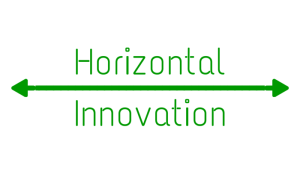 There was a great piece in the Harvard Business Review this month about innovation.
There was a great piece in the Harvard Business Review this month about innovation.
What was interesting about it was their recommended approach was a bit different, or as they described it, “horizontal.” When faced with a complicated problem, or one that had eluded solution, they recommended that we look sideways, not up. Normally, in most organizations we go up the hierarchical chain to ask for help and look for answers. This can be slow and usually looks at the problem in the same way the people who are looking for solutions have already done.
In the article, there are several examples of solutions found by looking horizontally. (I love that the problem they describe with space suits was solved by bra designers at Playtex! Who would’ve thought?) Typically, we look at or are tasked with solving problems that we know something about. We are in our field and we have a level of knowledge or expertise that would suggest we should be able to solve it. Then we hit a wall and can’t get past our own thinking or knowledge that keeps us stuck in a box. Horizontal thinking means going to other departments, other industries, people below and above us in the workplace to get all minds thinking about the problem.
This is why Lean Manufacturing works so well. The entire team is responsible for looking for ways to get rid of waste, not just a single department. Anyone, can look at anything else and offer solutions. By beginning with the premise that anything can and will be improved, they never stop looking for answers and they do it as a team. A truly “lean” company incorporates this practice throughout, not just on the manufacturing floor.
The workforce of today wants to be involved in solving problems, regardless of whether or not it is their department. They don’t do as well with hierarchical structures and horizontal thinking works well for them. They grew up thinking in groups, working on projects in groups, and not necessarily having a higher-up be “the decider.” They learned horizontal thinking and in some ways, they are well-positioned to solve today’s problems with innovative thinking through their “group think” upbringing.
To encourage this within your organization, you’ll need to do two things. First, encourage a culture of collaboration and innovation through involvement of the entire team, not just departments or individuals considered the “experts.” Second, you will have to encourage or teach them to really look outside the box for help – meaning outside the company – to similar and dissimilar organizations, schools, and other public entities to think about the problem differently and ultimately to solve it differently.
Lastly, you’ll need to make it okay to look for solutions in unconventional places. All leaders will need to be tolerant of this and know that it won’t always be successful. However, innovation is never a straight path, so the more paths you are on, the higher the likelihood that you’ll hit on what solves a problem or creates something brand new.
